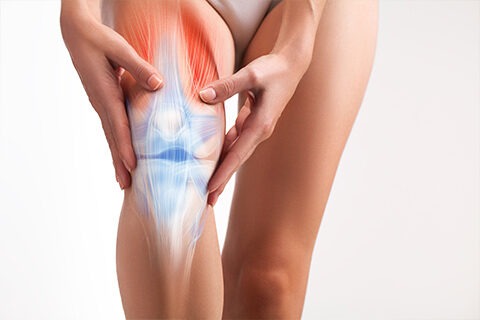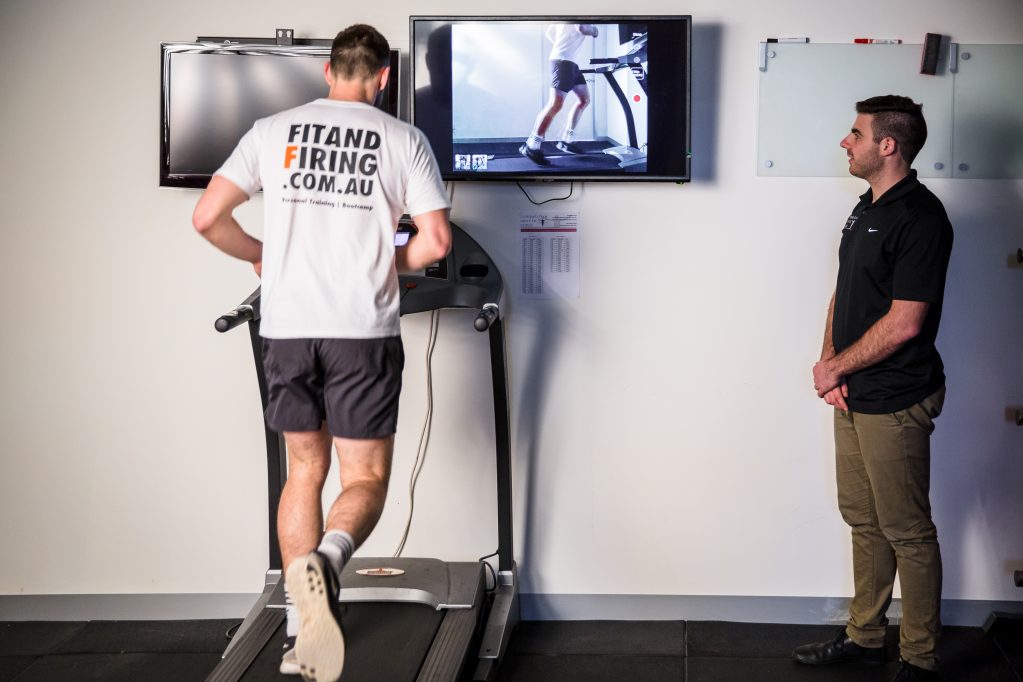Patellofemoral pain (PFP) is a common condition that is characterised by mild to moderate discomfort around the knee cap, which can worsened with activity.It can cause pain for just a few weeks, right up to multiple years, and, at times, can be difficult to treat. Recent evidence has shown that changing the way people run can have a positive impact on the symptoms of PFP. Let’s have a look at this in greater detail.
Changes at the hip to help the knee?
PFP, at least in part, is thought to be caused by too much stress on the patella (knee cap). So it makes sense to try to reduce the load on it. One thing we often seen in runners is a little too much pelvic drop on the side that is not in contact with the ground (see picture below reference: Illes & Maola, 2012). This is most likely caused by the person’s hip joint and muscle anatomy (in most cases, the pelvis drops a normal amount). We know that this increased pelvic drop can put more pressure on the knee cap.
One of the ways to decrease this pelvic drop is to increase your stride rate and shorten your step length. We generally start with increasing your stride rate by 5-10% and try to find the ideal amount of change from there. This is normally guided by pain levels at the knee.
This will often have some nice flow on effects as well — your knee may be less locked out when you strike the ground, and you will often find that you are running more upright.
Won’t this make me run slower?
This is a common question, and the answer is no. Generally, the decrease in stride length with be compensated for the increased in stride rate. Your knee may also benefit from the decreased load on the knee cap with each step.
Running re-training cues
Changing your running style can be quite challenging, as it may (pardon the pun) feel like learning to run again. However, it is not wise to change things too drastically, as this can lead to confusion for the runner and has the potential to cause injury. The first cue I give a runner is to try to run with quicker, shorter steps. From here I will compare what they looked like before and after, and then give them some more specific advice (e.g. try to land with your knee a little more bent) to achieve their ideal running mechanics.
Is running re-training all I have to do?
Unfortunately, no. Although running re-training can be great for PFP, it is a multi-faceted problem. It normally requires some exercise rehabilitation (link) for the knee hip and ankle to assist with the load tolerance and fatigue resilience of the patella area.
How long will it take?
For any medium to long-term PFP complaint you should normally see some improvement in your knee with 4-6 weeks, and further improvements in 8-12 weeks. This is a very rough guide, as each case is very different. My main advice is to be patient with your recovery time and be diligent with your rehab work.
Have a questions about PFP or running analysis, drop us a line at:
info@melbourneosteopathycentre.com.au
About the Author:
Dr. Nicholas Tripodi is a Co-director and Osteopath at the Competitive Sports Clinic located in the Essendon District. Nicholas has particular interests in sports injuries, exercise rehabilitation and running and cycling analysis.
References:
Barton, C. J., Bonanno, D. R., Carr, J., Neal, B. S., Malliaras, P., Franklyn-Miller, A., & Menz, H. B. (2016). Running retraining to treat lower limb injuries: a mixed-methods study of current evidence synthesised with expert opinion. Br J Sports Med, 50(9), 513-526.
Illes, J. D., & Maola, C. J. (2012). Chiropractic management of low back pain in a patient with a transfemoral amputation. Journal of chiropractic medicine, 11(3), 179-185.


